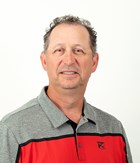Acre Investment ROI
BY Dairyland Seed Agronomy Team
With harvest completed in almost all areas, the focus on many farming/ranching operations, besides day-to-day management, is putting in next spring’s crop. Another aspect is looking at managing the cost of producing that bushel or ton of crop due to input and commodity prices.
One of the easiest ways to reduce your cost of production per bushel or ton (unit) is to increase yield. The more bushels or tons you have per acre, the lower that cost per unit of production will be. In many instances that is easier said than done. Listed below are potential areas to consider in helping to manage cost of production per unit or ton produced.
Soil Test: Identify the fields or areas in fields that have higher fertility levels. If you have not soil tested in the last few years, find out what your fertility levels are which may allow you a more refined and accurate way to reduce crop nutrient costs. The adage “if you can measure it, you can manage” rings true in this instance.
Grid or Zone Sampling: A standard soil sample is a nice tool showing for soil test levels. However, a grid or zone sampling soil test shrinks the area that you will be testing from just two or four samples on a 40-acre field to eight or more. The more correct information you have, the better able you are to manage your fertility levels. Grid or zone sampling shows you which acres or portions of a field need nutrients or lime and which ones do not allowing you more flexibility on what to apply, when, and where.
Soil Fertility:
- If your soil’s nutrient levels are testing in the medium to high range, cutting back the amount of nutrients applied is something that could be done to help reduce costs.
- If your soil nutrient levels are testing high to very high, you may not need to apply nutrients. Which, considering the cost of crop nutrients, could be a significant amount of dollars.
- If your soil nutrient levels are in the low to medium range, I would recommend just applying crop removal or what nutrients your crop removed this last growing season(s). This can be done by downloading or bringing your yield information into Granular Insights from Corteva.
Manure: If we have fields or farms that traditionally have had manure applied to them, take a look at putting manure on different or “new” farms. Applying manure on different acres or spreading lesser amounts on more acres can provide a great tool to reduce the amount of purchases crop nutrients. Conversely, if you have high fertility levels and do not need the manure, this would be a wonderful time to sell some of it. Manure is not only a great source of crop nutrients but also provides biological activity that many soils could benefit from. If you look at the manure your farm/ranch operation producer as a mini fertilizer plant, you start to focus in on where you are able to extract those most value from that asset.
Nitrate Testing: In many areas of the Dairyland Seed footprint, we had a very warm and dry late summer and fall. Normally, when we have warm temperatures, our soils warm up and organic matter starts to release (mineralization) more nitrogen into the soil. Until plants take up this nitrogen or it is immobilized by soil organism, this nitrogen is free to be used. By doing a soil nitrate test this fall (where possible) and also next spring, you would have an idea of what is available in the soil as nitrate. This allows you the opportunity to more accurately manage the amount of nitrogen applied. As a general statement, if we stay cool and dry until next spring, most of the nitrogen should be there. Conversely, if we start getting warmer soils (above 41° F) and more frequent rainfall, this nitrogen could denitrify or leach from the soil surface. By doing a nitrate test this fall and next spring, you know what “free” nitrate is available for you to manage.
Split application of Nitrogen(N) and Sulfur (S): In many instances, if you split apply your nitrogen and sulfur, you will get a yield increase due to more N and S being available to the plant over an longer period of time versus being moving through the soil profile. (This may be more advantageous in areas where manure has been applied or where you have taken a nitrate sample.)
Variable Rate Seeding: If you have been bringing your yield data into Granular Insights from Corteva or other yield data management programs, you know you have areas in your fields that have higher and lower levels of yield. If an area of a field has a soil type or organic matter that does not hold on to available water (sand/gravel), odds are it cannot support a higher plant population level. By maintaining a higher plant population in those areas, you are not getting the most value out of your seed dollar in that area. Reducing the plant population in those areas potentially does two things: Increases yield due to more available water per plant and increases yield (fewer plants equates to more available water and nutrients per plant). Conversely, if you have areas of the field that are higher yielding, are we putting on the correct plant population? If we increase the plant population, do we increase yield?
Seed Product Considerations: Does a product have more ear flex and or is there a field that is going to corn that cannot handle a higher plant population? Reducing plant populations with that product or field helps you manage your seed investment per acre.
Product or Management Practice ROI: We all seem to have a product or practice that we utilize because that is the way that Dad, Grandpa or the way we have always done it. Take some time to ask the “Why and What” questions as to why we do that and what does it do for us.
As always if you have questions regarding this contact you Dairyland Seed District Sales Manager or Regional Agronomist.

Brian Weller
Western Region
507.456.3034

Rod Moran
Western Region
507.456.3034

Dan Ritter
Central Region
219.863.0583

Chad Staudinger
Northern Region
608.220.9249

Mark Gibson
Eastern Region
260.330.8968

Amanda Goffnett
Eastern Region
989.400.3793

Ryan Mueller
Eastern Region
989.400.3793
